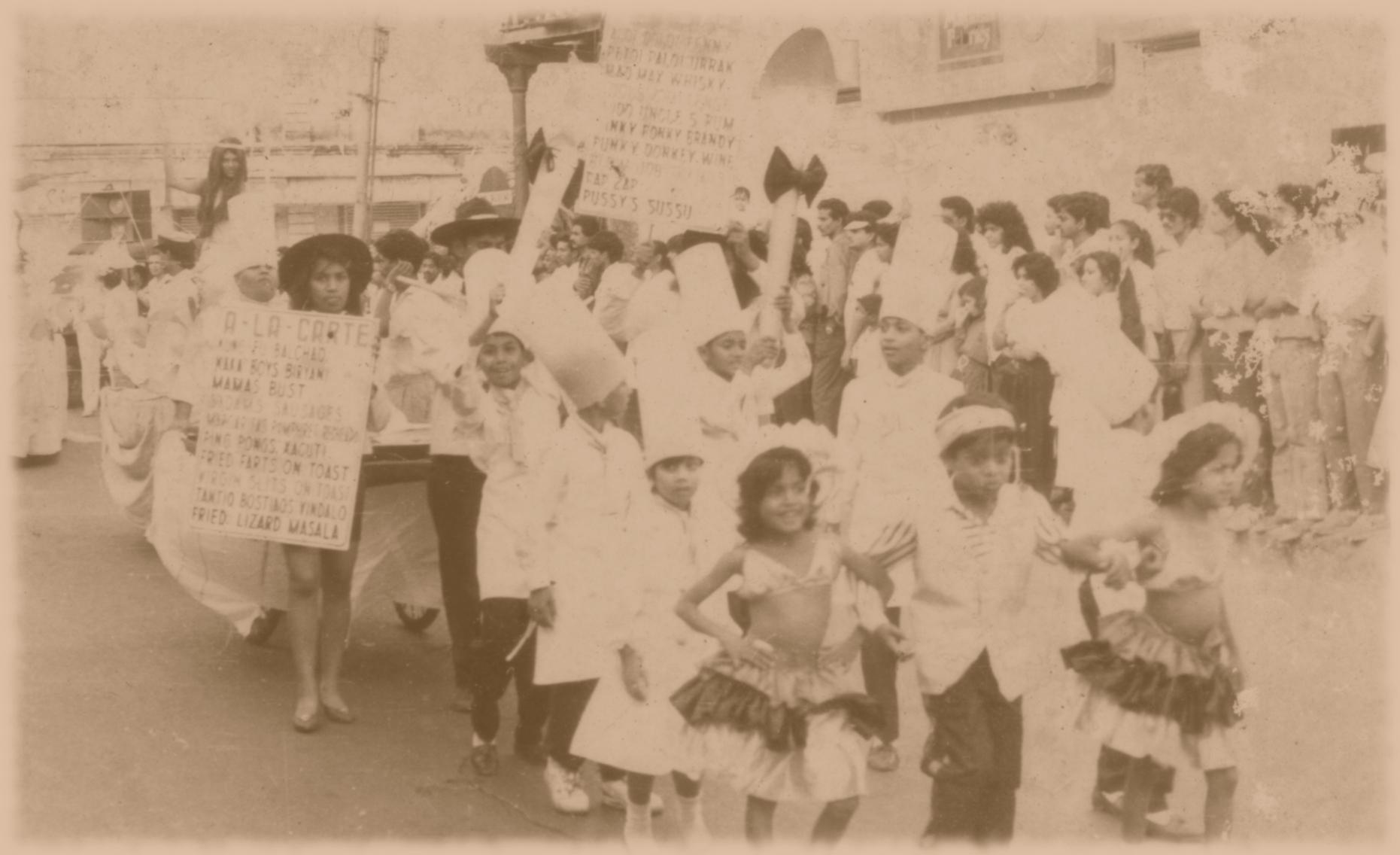 of Holi and Carnaval provide a welcome release for those who have to through the year suffer the insufferable.
of Holi and Carnaval provide a welcome release for those who have to through the year suffer the insufferable.This year brings different emotions however, born no doubt from my presence in a different context. This year, I find myself in a city where a number of us would believe that our Carnaval practices were born. As yet, this has to be the most lackluster Carnaval I have had in years. Perhaps we can put it down to the fact of rain that seems to pour down interminably. Carnaval to my mind is necessarily a tropical feast. The cold, frigid rains of northern climes do not sit well with my imagination of the feast. Or it could be the fact that there has not as yet been a public parade like I am used to in the land of my birth. Be that as it may, so far this year, at the time of the writing of this column, Carnaval sucks.
a good emotion because it provides another  position from which to think this entire festival through. For a number of us Goans, Carnaval is a time not only of wild celebration, but a time of lament as well. We gather to celebrate and lament the better times that were had before. As I lament this year, for entirely different reasons than the passing of good times, I ask myself if Carnaval has not gained the significance that it does because it is a primarily a time when we mourn something besides the past.
position from which to think this entire festival through. For a number of us Goans, Carnaval is a time not only of wild celebration, but a time of lament as well. We gather to celebrate and lament the better times that were had before. As I lament this year, for entirely different reasons than the passing of good times, I ask myself if Carnaval has not gained the significance that it does because it is a primarily a time when we mourn something besides the past.
As I have mentioned before, the point of Carnaval is to invert dominant morality for ever so short a period. The Goan Carnaval, however much we may lament the passing of its great age, does invert a morality. It inverts the sanctimonious morality that comes along with the
There is no other reason that I can think of to explain the gusto with which most Goans I know reach out to use the Carnaval to wear saris and dance in the street, to get on to ridiculous floats, to shave their legs, to capture the street in a couple of brief gaudy hours.  What is going on is nothing less than at attempt to assert the possibility for another kind of citizenship that the kind that is currently on offer.
What is going on is nothing less than at attempt to assert the possibility for another kind of citizenship that the kind that is currently on offer.
I understand citizenship as the complex of relationships between citizen and State. This bond encompasses a number of relationships that include the political, moral and cultural. It is embodied in the manner in which certain things are allowed, and certain things disallowed. The manner in which you may behave in public, and ways in which you may not. Ways in which political leaders may behave and ways in which they may not.
Take a closer look at the occurrences in Goan public life, and you will realize that since the start of our post-colonial existence, we have constantly been attempting to define the nature of citizenship in this tiny space. The dynamics of this relationship are to be sure over-determined by the inertia of the Indian political system within in which we operate, but between the spaces of the framework there are multiple attempts to configure the dynamics of citizenship in
The Bahujan Samaj’s bid for Marathi and merger, the ramponcars movement in the 80s, the definition of Goan identity primarily around Konkani, the demand for the recognition of the Roman script for Konkani. In more recent times we have sought to define Goan identity to include a definite spatial aesthetic. Urban design, as I have argued in earlier columns, encompasses definite social relations. We now demand a ‘Special Status’ for
Carnaval is one such time when this desire to recast citizenship is expressed. Not necessarily by all, but definitely some definite segments of our population. This column will be published only after the fires of our desires have been put to ashes. And yet, who knows, some day those fires will burn long enough to brand the world around us? One only hopes that it will reforge the bonds of citizenship with a tendency towards greater equality, rather than the tendency toward autochthony that we so increasingly see.
Viva Carnaval!
(A version of this blog was first published in the Gomantak Times, 17 Feb 2010)
Credits
Holi image from http://www.flickr.com/photos/88411058@N00/3367900205/

1 comment:
you have hit the nail on the head. i think everyone should read this article and if they understand it lament what should have would have and could have been
viva carnaval(whatever is left of it)
Post a Comment